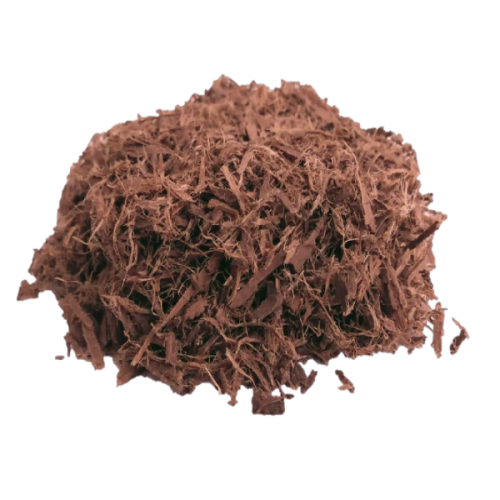Mimosa Hostilis Root Bark holds an important spot in standard tactics and modern-day botanical purposes. This text explores the attributes, origins, and customary concerns surrounding this outstanding plant material, with a selected focus on the prized Brazillian Mimosa Hostilis Root Barks.
What's Mimosa Hostilis Root Bark?
Mimosa Hostilis, scientifically often known as Mimosa tenuiflora, is actually a perennial tree indigenous towards the northeastern region of Brazil and parts of Mexico. The root bark of this tree has long been made use of for centuries by indigenous communities for many sensible and standard applications. The internal root bark consists of noteworthy concentrations of tannins, alkaloids, and various phytochemicals that contribute to its distinctive Attributes and purposes.
The tree by itself is remarkably resilient, able to surviving in very poor soils and drought circumstances. This hardiness contributes into the sturdy character of your bark and its chemical profile. When harvested sustainably, the outer root bark is thoroughly divided to accessibility the dear interior bark, which is then dried and geared up to be used.
Brazilian Mimosa Hostilis Root Bark: The Gold Normal
When speaking about excellent in Mimosa Hostilis goods, the Brazillian Mimosa Hostilis Root Barks are commonly viewed as superior from the botanical market place. Quite a few components contribute to this name:
Best Rising Circumstances
The precise soil composition, climate, and ecosystem of Brazil's northeastern location develop ideal problems for Mimosa tenuiflora to produce its comprehensive chemical possible. The mineral-abundant soils and particular pattern of rainfall and sunlight in this region appear to reinforce the focus of Energetic compounds in the basis bark.Regular Harvesting Awareness
In regions where Mimosa Hostilis is applied ordinarily, harvesters have formulated innovative approaches for sustainable harvesting that preserves equally the tree and the potency on the bark. This knowledge, passed down by way of generations, makes sure that the bark is collected at the correct time of calendar year and processed applying strategies that preserve its integrity.Unique Bodily Qualities
Brazilian Mimosa Hostilis Root Bark generally shows a prosperous reddish-brown to purple inner bark having a fibrous, dense texture. The Visible qualities normally function an initial indicator of high quality, with experienced people recognizing the unique visual appearance of bark from this area.
Common Applications and Takes advantage of
The programs of Mimosa Hostilis Root Bark span both of those regular and contemporary contexts, although It really is essential to know the authorized standing of such works by using may differ by nation and jurisdiction.
Standard Craft and Follow
Indigenous communities have Traditionally utilised Mimosa Hostilis Root Bark for developing purely natural dyes for textiles, Together with the bark generating gorgeous shades of purple, burgundy, and deep brown. The tannin-loaded properties also manufactured it worthwhile for leather tanning and also other practical programs.Modern day Botanical Investigate
Up to date desire in Mimosa Hostilis Root Bark extends to various fields of botanical analysis, specifically learning its chemical composition and possible purposes. Scientists have determined a number of exciting compounds within the bark that warrant further more scientific investigation.Horticultural and Agricultural Employs
In permaculture and sustainable agriculture, Mimosa tenuiflora is valued as a nitrogen-correcting species that could strengthen soil high-quality. The bark by itself, when processed, can be utilized being a organic mulch or soil amendment in selected agricultural contexts.Top quality Assessment and Identification

For anyone working with Mimosa Hostilis Root Bark, knowing ways to evaluate high quality is important. Significant-quality substance, significantly reliable Brazillian Mimosa Hostilis Root Barks, generally reveals particular attributes:
The visual visual appearance should really display a transparent distinction among the outer and inner bark, Together with the interior bark displaying deep, vibrant shades. The material ought to have a characteristic earthy, a bit sweet aroma, no cost from musty or moldy notes. When processed, the bark ought to produce a high-quality powder when keeping its fibrous structure until grinding. Effectively dried bark really should be brittle although not dusty, indicating right humidity information.
Usually Questioned Questions (FAQs)
one. Exactly what is the distinction between Mimosa Hostilis Root Bark from Brazil together with other locations?
Brazilian Mimosa Hostilis Root Bark is usually regarded as remarkable due to best developing problems in northeastern Brazil, which bring about better concentrations of active compounds. The normal harvesting strategies utilized With this location also contribute to the overall high quality and potency of the ultimate product.2. How should I retailer Mimosa Hostilis Root Bark to take care of its high-quality?
Retail outlet the bark in a cool, dark, and dry location in an airtight container. Protection from mild, humidity, and Serious temperature fluctuations will help preserve the bark's chemical integrity and prevent degradation of its active factors.3. Is Mimosa Hostilis an endangered species?
No, Mimosa tenuiflora isn't now mentioned being an endangered species. In actual fact, It is really recognized for its resilient development and talent to prosper in complicated conditions. Nonetheless, liable harvesting practices are still vital to ensure the sustainability of wild populations.four. Can I improve Mimosa Hostilis outside of its native habitat?
While Mimosa tenuiflora thrives very best in its indigenous tropical local weather, it could be cultivated in identical environments. The tree involves perfectly-drained soil, a lot of sunlight, and safety from frost. However, the chemical Premium Mimosa Hostilis profile of cultivated specimens might vary from wild-harvested Brazilian product.5. What is the legal status of Mimosa Hostilis Root Bark?
The lawful position may differ drastically by place and jurisdiction. In some destinations, the Uncooked bark is legal to have, though in Other people, precise extracts or preparations could possibly be controlled. Usually investigate and comply with community laws and regulations right before attaining or utilizing any botanical material.Being familiar with Mimosa Hostilis Root Bark, particularly the high quality Brazillian Mimosa Hostilis Root Barks, needs appreciation of its botanical attributes, standard context, and appropriate apps. No matter if for research, craftsmanship, or botanical research, this exceptional plant materials continues being a subject matter of desire across numerous fields, nevertheless normally inside correct authorized and ethical boundaries.